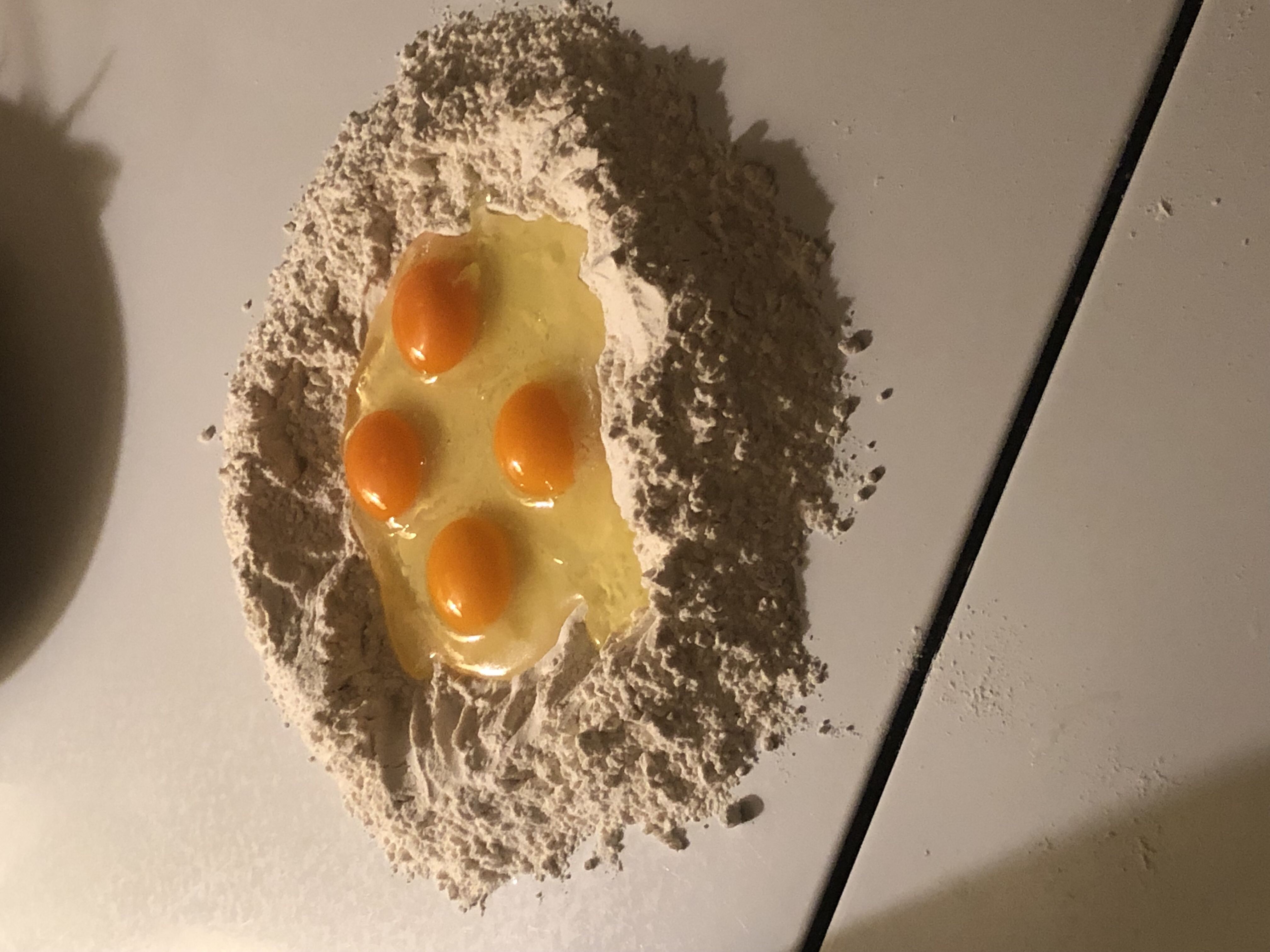DOUGH
In Italian pasta traditions there are essentially two types of dough. There are technically infinite types, but for the sake of simplicity...


-
pasta all'uovo EGG PASTA
Originating in the center and north of Italy, egg based doughs are especially popular in regions like Emilia Romagna (known for stuffed pastas). These regions historically have more access to dairy and eggs. This dough is commonly used when making sheets of dough for things like lasagna, cut sheets like fettuccine, or filled pasta like ravioli. It is elastic and relies on a combination of very finely milled wheat flour known as “00” “Double Zero” or Doppio Zero with the fat and water from egg yolks and egg whites respectively. It can be rolled out by hand (this is traditional and highly skilled work) or with the help of a pasta machine. If you are interested in flavored or colored dough, substitute some of the egg white with different vegetable purees- spinach for a green dough, beets for a magenta dough, etc. - pasta senza uova EGGLESS PASTA
This dough has origins in southern Italy and Sicily where ingredients like eggs and dairy were scarce, expensive, or too valuable to waste on pasta. This dough is used more often for hand formed and substantial solid shapes like cavatelli or orecchiette. It is made of semola rimacinata (a finely ground semolina which is a durum wheat flour) and water. Machines are seldom used to work or form this dough in homes, it is the closest to the dough used to produce store-bought dried pasta, but for most of those shapes you would need an extruder. For the first time pasta maker or someone making pasta with very few tools I always recommend starting with pasta senza uova. Most recipes in english will be for the egg based dough but I find it is the more temperamental of the two.
Both of these doughs are defined by their ingredients. For egg-based dough American all purpose flour is, in most cases, an unacceptable substitute, it is too coarsely milled and, depending on the brand, contains the wrong amount of protein which will make for either a tough and gummy pasta or a very mushy dough with little elasticity. 00 (double zero or doppio zero) flour intended for pasta is what you should be looking for. It is a specific blend of wheat (this varies a bit from brand to brand) that is the perfect balance of soft from being finely milled and elastic from a specific protein content of about 11 or 12%. That being said, if you have to use all purpose flour, go for it. But don’t let a less delicate or tougher outcome discourage you from trying again. 00 is just a total joy to work with and worth the effort of tracking down.
For the egg-less dough, semola rimacinata is an entirely different kind of wheat, durum wheat. Durum is traditionally grown in southern Italy and Sicily where this eggless dough originates. It is very fine and almost sandy. When hydrated it becomes incredibly smooth. Semolina is also not quite the same as semola rimacinata, it is a coarse grind of the same durum wheat and while delicious and used in some pasta recipes, you would usually need to cut it with 00 flour to make a workable dough.
